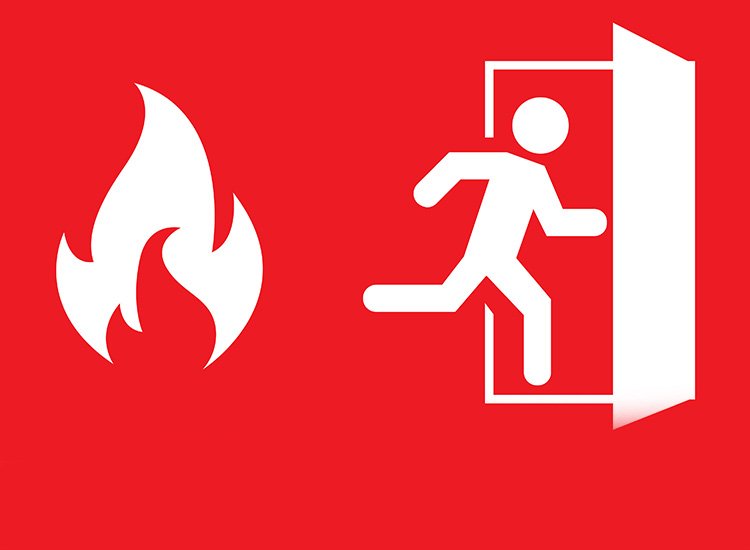Fire safety for business premises – are you meeting your obligations?
Owners and managers of businesses and other organisations’ premises must fulfil important responsibilities covering mandatory life safety fire risk assessments. But what precisely are these, and how can ‘Duty Holders’ best discharge their legal responsibilities?
In response to incidents including the 2017 Grenfell Tower tragedy, the importance of fire safety requirements is increasingly better appreciated, including a growing focus on the competency of system and service providers, as well as on the adoption of strengthened safety measures to protect those working in and visiting commercial, public sector premises and other facilities.
Essentially, employers/owners/managers of premises are likely to be identified as the legal ‘Duty Holder’ (referred to as the ‘Responsible Person’ in the Regulatory Reform (Fire Safety) Order 2005, introduced in England and Wales in October 2006 – other similar legislation covers Scotland and Northern Ireland.)
Duty Holders in a wide spectrum of non-domestic premises are tasked with ensuring ‘life safety fire risk assessments’ are carried out and the findings of assessments implemented. This may require the implementation of fire safety protections including fire detection, extinguishing and alarm systems, and emergency evacuation procedures.
In terms of inspections and enforcement action, the Fire Brigade may visit premises to check the fire risk assessment and prevention measures specified are appropriate. An Enforcement Notice may be served where they consider a serious risk is not being managed properly. Such an Enforcement Notice, if issued, details improvements needed – and by when they should be implemented. Insurance cover for premises may be invalidated if fire risk assessment-related measures have not been followed and/or the fire and rescue service has served an Enforcement Notice. Failure to comply with an Enforcement Notice could result in prosecution.
Conducting fire risk assessments
In essence, life safety fire risk assessment (LSFRA) protects lives and is fundamental to establishing sufficient fire prevention, protection and suppression measures, alongside safe evacuation procedures that can be applied in the event of an incident.
Assessment is best conducted once a building is occupied and operational. Since building use changes over time, LSFRA is only meaningful in the context of current usage, as well as the integrity of physical elements such as escape routes and fire doors. Where an organisation employs five or more people the results of LSFRAs must be documented and all assessments must be periodically reviewed to ensure they remain valid, considering, for example, given any change of use between assessments.
Identifying the ‘Duty Holder’
The Duty Holder can be anyone with control and/or oversight of a premises. In circumstances where the maintenance of a building (including, for example, regular fire alarm testing, portable fire extinguisher and other routine maintenance) is undertaken by a facilities management provider, or another external contractor, the Duty Holder must maintain a close working relationship with them to ensure required maintenance procedures are being adequately discharged, and that any changes in building use are reflected in the appropriate siting and maintenance of safety equipment.
Competent assessments
It may appear surprising, but current fire safety legislation does not define fire risk assessor ‘competence’! Government guidance states that where identified Duty Holders are unwilling or unable to complete an LSFRA – after all, this is a specialist area of expertise – advice should be sought from a demonstrably competent person. The guidance recommends assessments be conducted by a person with comprehensive training and experience in the specific type of fire risk assessment to be carried out.
Third party certificated or approved providers can provide significant reassurance for Duty Holders seeking help in meeting their fire safety obligations. Approved LSFRA providers all commit to an independent ongoing audit programme to verify their competency. Holding approval from a UKAS (United Kingdom Accreditation Service)-accredited independent certification body such as NSI (which is licensed to deliver the BAFE Life Safety Fire Risk Assessment Scheme SP205) evidences their competence to conduct fire risk assessments and clearly demonstrates their services are compliant with current appropriate industry standards and best practice.
Conclusion
Ensuring all appropriate fire safety measures are adequately identified and periodically reviewed by risk assessment is a primary task of Duty Holders, as is the follow-up to ensure identified measures are effectively implemented. Where changes in building use and working practices have occurred – for whatever reason: say, topically, as a result of Covid-19 and flexible working practices – these should be identified and considered in any fire risk assessment review.
Requesting third party certificated/approved LSFRA providers to review measures in place can help Duty Holders ensure they effectively fulfil both their legal responsibilities and insurance requirements, and demonstrate commitment to the safety of their staff, customers and visitors to the spaces they oversee.
John Davidson
Approval Schemes Manager (Systems)
National Security Inspectorate
Read more articles on fire safety and prevention

